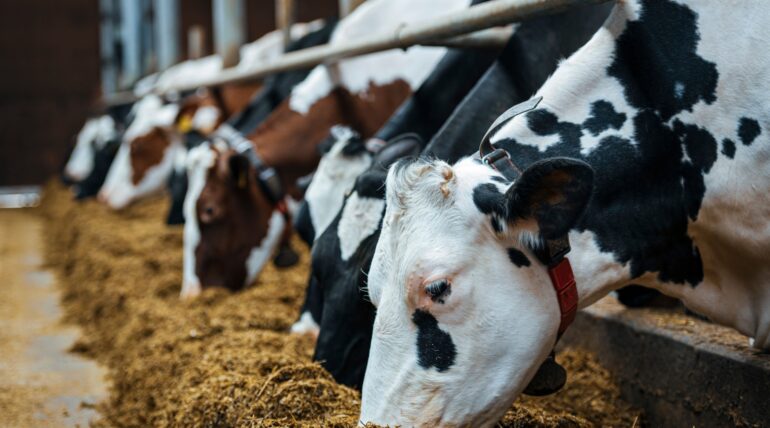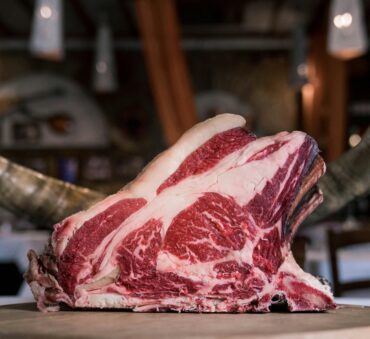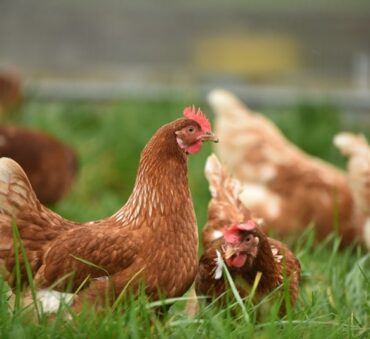In an era of planetary strains and skyrocketing food demands, our instinctive reflex is to produce more, plant more, and harvest more. We’re fixated on the output, ignoring a very real problem this overproduction creates: food waste.
Every year, millions of tons of food are discarded and end up in U.S. landfills. This problem not only results in an enormous loss of valuable resources but also contributes to environmental degradation. Food waste and climate change are inherently linked. It’s mainly because decomposing food in landfills generate a substantial amount of methane, a potent greenhouse gas.
However, this shocking reality is accompanied by a double irony; while we discard vast quantities of food, our livestock production systems face continuous challenges in sourcing nutritious, affordable, and sustainable feed options.
Amidst this scenario, converting food waste to animal feed emerges as an innovative and sustainable solution – when done correctly, of course.
In this article, we’ll explore the process of converting food waste into animal feed, the types of feed that we can produce, and the laws and regulations to consider.
Animal Feed in the Food Recovery Hierarchy
The Environmental Protection Agency (EPA) has developed the Food Recovery Hierarchy. It prioritizes different methods of food waste management based on their environmental impact. The hierarchy consists of source reduction, feeding people, feeding animals, industrial uses, composting, and landfill/incineration.
Among these, converting food waste into animal feed ranks third, primarily because it reuses waste as a valuable resource and reduces the demand for new feed production. This placement in the hierarchy highlights the importance of feed conversion as a more environmentally sustainable practice than less preferred methods, such as composting or landfilling.
What is the process of food waste conversion to animal feed?
Converting food waste into animal feed is a comprehensive and meticulous process that demands a professional and systematic approach.
1. Collection
The process starts with the systematic collection of food waste from various sources. These sources can be restaurants, supermarkets, and food processing facilities. The collected waste is then separated into organic and non-organic categories. The non-organic waste, including packaging materials and other contaminants, is disposed of accordingly, while the organic food waste proceeds to the next step.
2. Pre-processing
Once the waste has been collected and separated, the pre-processing stage begins. At this stage, the food waste is thoroughly checked for any remaining non-organic materials. It is then sorted based on its suitability for different types of animal feed. For instance, certain types of waste may be more appropriate for swine feed, while others may be better suited for poultry or cattle feed.
3. Processing and Conversion
The waste then undergoes treatment and conversion into feed. It can be done via different methods, such as ensiling (fermentation), rendering (cooking), or drying, depending on the type of waste and the intended use of the feed. The goal is to reduce moisture, kill pathogens, and break down complex nutrients into a form more easily digestible by animals.
Throughout the conversion process, ensuring the safety and quality of the animal feed is of paramount importance. The feed must be screened for toxins, harmful substances, and potential pathogens to prevent any health risks to the animals and, subsequently, humans.
In addition to screening, the feed is often heat-treated to eliminate any disease-causing organisms. It’s then tested for its nutritional content to ensure it meets the dietary requirements of the intended livestock. Any batches of feed that fail to meet the set standards are discarded or reprocessed.
This is why it is exceptionally important to partner with a certified and qualified company like Shapiro as we have the technical knowledge, infrastructure, and equipment necessary to carry out each step of the process with precision. Furthermore, we adhere to the highest standards of quality control and regulatory compliance, which is essential for ensuring the safety and nutritional value of the resulting animal feed.
Once the feed passes the safety checks, it’s packaged and ready for distribution.
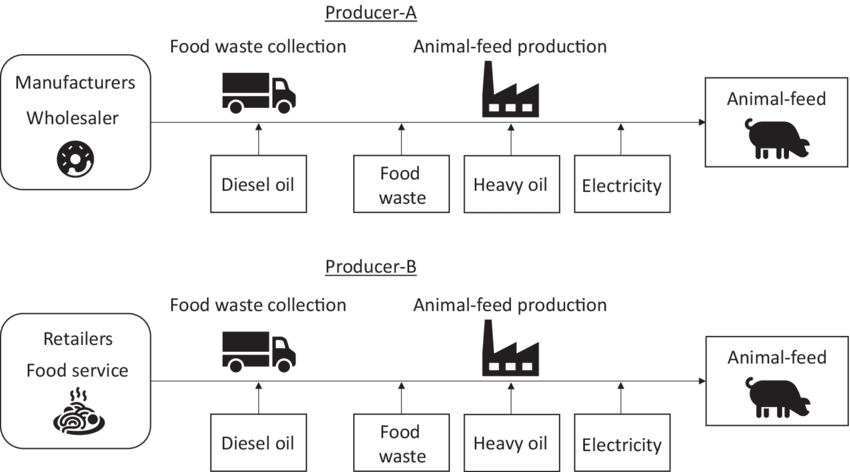
Laws and regulations of feeding food waste to livestock
The process of converting food waste into animal feed is governed by an array of federal laws aimed at ensuring the quality of livestock feed and safeguarding animal health. And rightly so, as historically, the mismanagement of converting food waste to animal feed has led to many disease outbreaks. Although regulations vary by state, the following is a summary of key regulations:
- The Animal Feed Regulatory Program Standards (AFRPS): These standards establish quality control measures that dictate the permissible contents of animal feed.
- Swine Health Protection Act (SHPA): This requires that food scraps containing animal meat or animal by-products to be heat-treated in a manner that is sufficient to kill disease-causing bacteria (212° F or 100° C at sea level) for at least 30 minutes.
- The FDA’s Bovine Spongiform Encephalopathy (BSE)/Ruminant Feed Ban Rule: This rule prohibits the use of almost all mammalian protein (i.e., animal tissue) in feeds for ruminant animals.
- The Food Safety Modernization Act Preventive Controls for Animal Food: This requires animal food processing facilities to implement necessary food safety controls.
- Regulations Regarding Labeling and Adulteration: Any food, including animal feed, cannot be adulterated or misbranded.
Types of Animal Feed Created from Food Waste
Swine feed
Pigs, being omnivores, are exceptionally suitable for consuming feed derived from food waste. Once the collected waste has been processed, decontaminated, and heat-treated to eliminate potential diseases, it can be converted into nutrient-rich swine feed.
This type of feed can constitute a considerable portion of a pig’s diet, depending on the food waste’s nutritional content. Besides being an excellent source of proteins, carbohydrates, and fats, it also serves as a source of essential minerals and vitamins.
Poultry feed
When it comes to poultry, certain types of food waste, such as fruits, vegetables, and grains, can be processed and turned into suitable feed. It’s important to note that unlike swine, poultry are primarily herbivorous, which limits the types of food waste that can be included in their feed.
Processed food waste can serve as a supplement to traditional poultry feed, providing an array of essential nutrients. This not only contributes to the health and productivity of the poultry but also reduces the cost of feeding.
Cattle feed
Despite cattle being ruminants and having a strictly plant-based diet, certain types of food waste can be incorporated into their feed. For instance, grain-based products, such as bread and pastries, can be repurposed into cattle feed once they are processed and deemed safe for consumption.
However, it is imperative to ensure that the feed does not contain any meat or animal-derived products, as this can lead to health problems in cattle and, subsequently, in humans consuming their products.
Fish feed
The application of food waste conversion extends to aquaculture as well. Suitable food waste can be transformed into nutrient-dense fish feed pellets, providing essential proteins and fats. This method also alleviates the pressure on wild fish stocks, traditionally used for producing fish meal and oil – common ingredients in fish feed.
Pet feed
Even our domestic companions can partake in the benefits of food waste conversion. With proper processing, certain types of food waste can supplement commercial pet food, offering a balanced blend of nutrients.
For instance, discarded fruits and vegetables can be integrated into pet feed, providing fiber and essential micronutrients. However, caution must be exercised to exclude food waste that can be toxic to pets. Examples of these can be onions, chocolate, and certain types of nuts.
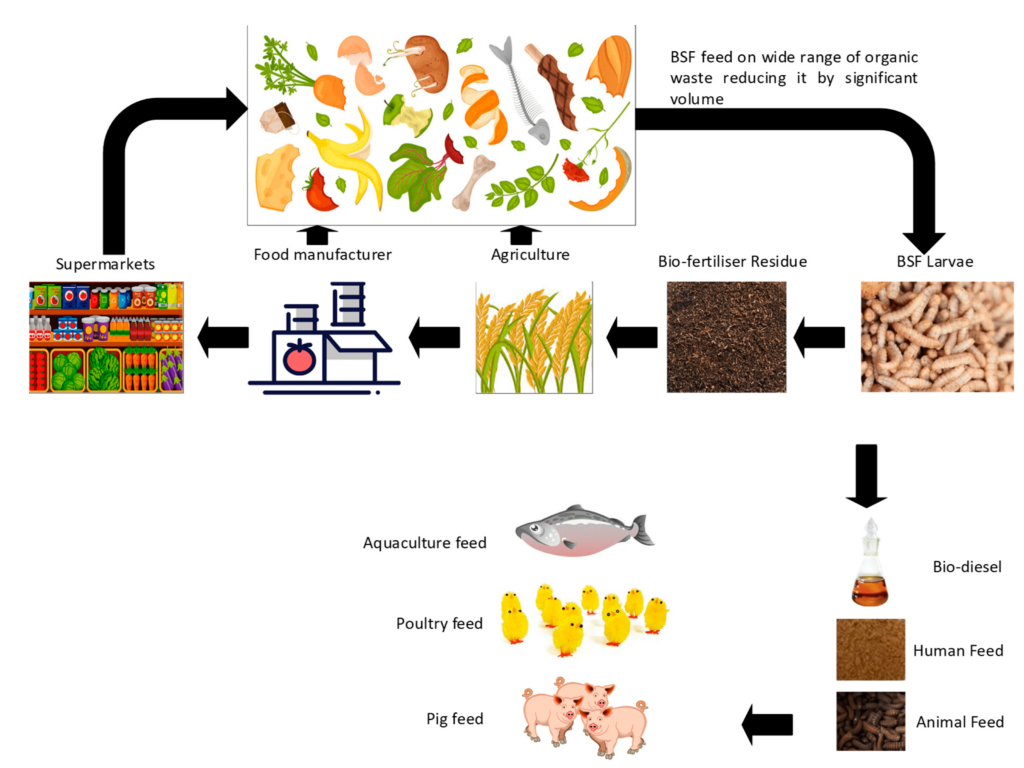
Benefits of Converting Food Waste to Animal Feed
Using animal feed as a solution to food waste presents a host of benefits that span various sectors.
Environmental benefits
Converting food waste into animal feed can significantly reduce the volume of waste reaching our landfills. Consequently, it aids in cutting down methane emissions, thus playing a crucial role in mitigating climate change. Moreover, it promotes resource conservation by diminishing the demand for land and water, traditionally required to grow feed crops.
Economic benefits
Utilizing food waste as a source of animal feed presents a cost-effective alternative to conventional feed. Consequently, it could potentially reduce livestock rearing expenses. This, in turn, allows for a more economical and sustainable livestock industry. Moreover, selling animal feed derived from food waste opens up new avenues for revenue, encouraging economic resilience.
Social benefits
The social benefits stemming from this practice are manifold.
- First, it can trigger job creation in various sectors, from waste collection and processing to feed production.
- Second, it bolsters local economies by retaining and utilizing resources within the community.
- Furthermore, it alleviates pressure on agricultural lands dedicated to feed production. As a result, it indirectly aids in improving food security and farm waste management.
Conclusion
In the quest for sustainable development, Shapiro’s innovative and multidimensional food recycling solutions are indispensable. Converting food waste into animal feed embodies such a solution. It entails addressing the intertwined challenges of food waste management, climate change mitigation, economic growth, and societal advancement.
By shifting our perspective and viewing food waste not as a problem, but as an opportunity, we can tap into its hidden potential.
Are you ready to contribute to a more sustainable and efficient food system?
Frequently Asked Questions
The types of food waste that you can convert into animal feed depend on the specific diet of the animal in question. Generally, however, it includes fruits, vegetables, grains, and bakery products. It’s important to note that the waste must be free of any inorganic or harmful materials.
Yes, when properly processed and treated, animal feed derived from food waste is safe for animal consumption. It undergoes rigorous screening for toxins and harmful substances and is heat-treated to kill any potential disease-causing organisms.
Converting food waste into animal feed significantly reduces the volume of waste that ends up in landfills. Thereby, it cuts down on methane emissions. It also conserves resources by reducing the need for land and water to grow feed crops.
It provides a cost-effective alternative to conventional feed, reducing livestock-rearing costs. Moreover, selling feed made from food waste can create new revenue streams and boost local economies.
Not all food waste is suitable for conversion into animal feed. Some food waste may contain harmful substances or may not be nutritionally suitable for certain animals. This is why food waste needs to go through a thorough screening and processing phase to ensure its suitability.
Baily Ramsey, an accomplished marketing specialist, brings a unique blend of anthropological insight and marketing finesse to the digital landscape. Specializing in educational content creation, she creates content for various industries, with a particular interest in environmental initiatives.
